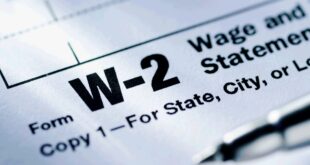Keeping track of expenses is an essential part of managing personal finances or running a business. One of the most crucial aspects of expense tracking is organizing receipts. However, with so many receipts to keep track of, it can be challenging to stay organized.
Here are some tips for organizing your receipts and simplifying expense tracking:
1. Use Receipt Scanner Apps
One of the easiest ways to organize your receipts is by using receipt scanner apps. These apps allow you to scan your receipts and store them digitally, eliminating the need for physical copies. Some popular receipt scanner apps include Expensify, Shoeboxed, and Smart Receipts.
These apps make it easy to categorize and label expenses as well as generate reports on spending. Additionally, they can integrate with accounting software such as QuickBooks, making it even more convenient to manage your finances.
2. Separate Business and Personal Receipts

If you’re self-employed or run a small business, it’s crucial to separate business and personal expenses. Keeping these two types of receipts separate will help you avoid confusion and simplify tax reporting.
To do this effectively, consider using different credit cards or bank accounts for personal and business expenses. You can also use different folders or envelopes to store each type of receipt separately.
3. Create a Filing System
Creating a filing system for your receipts can help you stay organized and easily access them when needed. Consider using a file cabinet or binder with labeled dividers for each category of expense.
For example, you might have categories such as office supplies, travel expenses, meals & entertainment, etc. Make sure to label each receipt clearly with the date, vendor name, amount spent, and any other relevant information before filing them away.
4. Digitize Your Paper Receipts

If you prefer keeping physical copies of your receipts instead of relying on digital storage only, consider digitizing them as well. This way, you’ll have both a digital copy that’s easier to access and a physical copy if needed.
You can use a scanner or take photos of your paper receipts using your smartphone camera. Once digitized, make sure to file them away in the appropriate folder on your computer or cloud storage service.
5. Regularly Review Your Expenses

Finally, make sure you regularly review your expenses and check that everything is accurate. This will help identify any errors or fraudulent charges early on so that they can be corrected quickly.
Set aside time each week or month to review all your expenses from the previous period. This will also give you an opportunity to analyze spending patterns and adjust accordingly if necessary.
Conclusion
Organizing and tracking your receipts can be a time-consuming task, but it doesn’t have to be overwhelming. With the right system in place, you can easily keep track of all your expenses and stay organized. The tips we’ve shared in this article are designed to help simplify the process and make it easier for you to manage your finances. So why not give them a try? You’ll soon find yourself with more control over where your money is going!
 Vermont Republic Second Vermont Republic
Vermont Republic Second Vermont Republic



